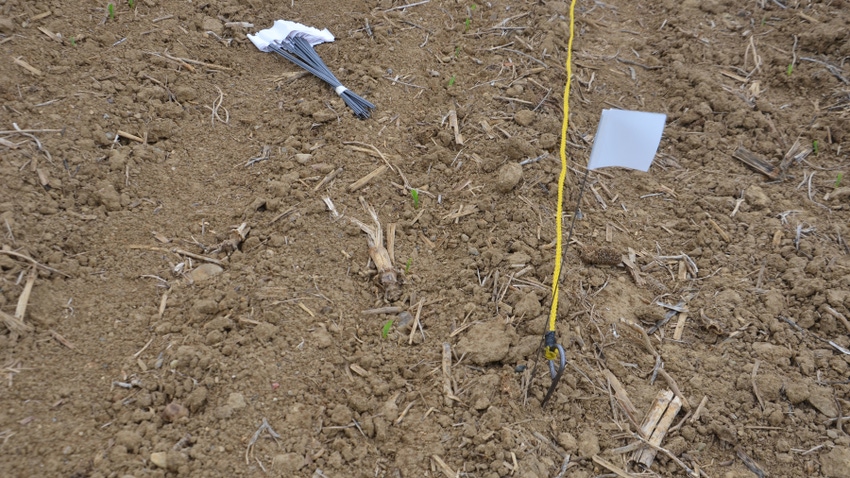
Small colored flags stuck in a young cornfield are a more common sight today. If you see this while driving by a neighbor’s field, odds are your neighbor is flagging corn emergence.
“More people are realizing how important it is for corn to emerge uniformly,” says Dave Nanda, a retired plant breeder and director of genetics for Seed Genetics Direct, Jeffersonville, Ohio.
Seed Genetics Direct sponsors Corn Watch. Through this project, Nanda visits the same field in central Indiana several times during the growing season, making observations that could relate to other cornfields around the region. The 2023 season marks the third year for flagging corn emergence in the Corn Watch field.
“It’s not that difficult,” Nanda explains. “We have made interesting observations so far by flagging corn emergence.”
Here are Nanda’s best tips for how to flag a cornfield for emergence:
Mark off 1/1,000 acre along a row. “I use a yellow rope with metal stakes on each end,” he says. “It’s marked at 17 feet, 5 inches for 30-inch rows. You could use a tape measure.”
Check more than one row. “You can do pairs of rows, blocks of four or whatever you like,” Nanda says. “One year, we did 24 rows, which was one complete planter pass. There can be row-to-row differences in uniformity of emergence, either related to soil type, differences in planter performance row to row or both. Just checking one row isn’t enough.”
Use different colored flags for each day. Hopefully, most plants emerge within 24 hours, so have extra of your first color on hand. Return to the field daily, putting a flag by each new plant that has emerged.
Keep good notes. Record the color of flag used each day. You may think you can remember, but don’t count on it, Nanda advises. Write it down.
Lessons learned through flagging
Here are four things Nanda has learned through flagging:
1. Year-to-year differences can be huge. In 2021, the first corn took 11 days to emerge. In 2022, the first corn appeared in six days, and about 90% was emerged in seven days. “The weather after planting was cool and wet in 2021,” Nanda recalls. “In 2022, it was unseasonably warm, with air temperatures in the mid-80s. Germination was much quicker in ’22.”
2. Emergence window varies year to year. Nearly 98% of all plants that emerged were flagged within the first two days in ’22, when it was warmer, Nanda says. In ’21, emergence was spread over 14 days or more. “Cool, wet weather really slows things down,” he says.
3. No-till fields emerge about 24 hours slower. In two of the three years Nanda flagged emergence, he compared no-till and conventional fields. In both ’21 and ’22 — two very different seasons — no-till emerged, on average, a day later than conventional corn.
4. Late-emerging plants tend to have smaller ears. “The trend is there, but it is not as drastic as some commercial companies imply,” Nanda says. “Typically, if a plant is four to five days behind its neighbor, ears will be somewhat smaller. Occasionally, a plant emerging that late won’t produce an ear, acting like a weed. Even emergence is important, but so are other factors, including even spacing along the row.”
Read more about:
EmergenceAbout the Author(s)
You May Also Like




